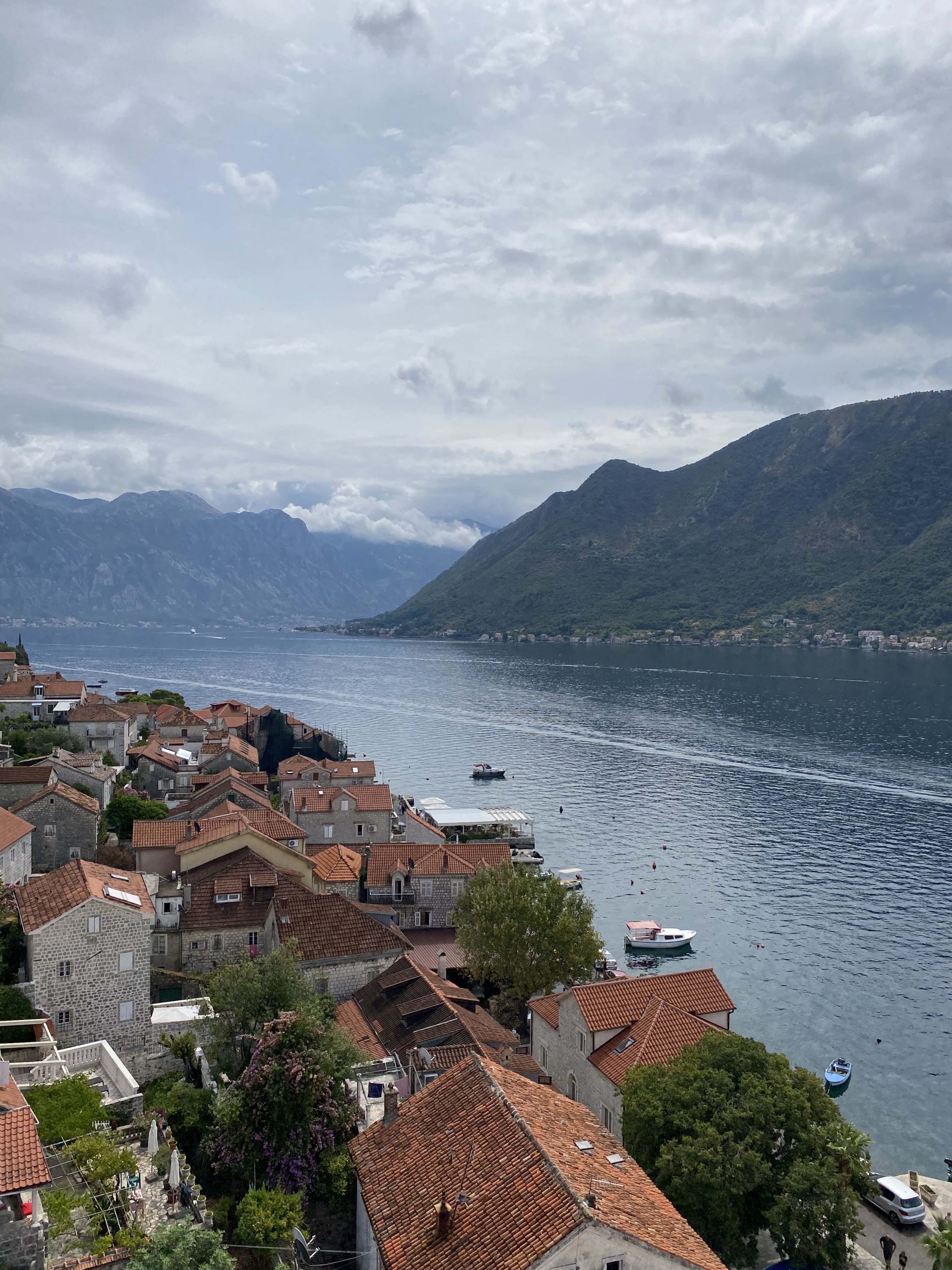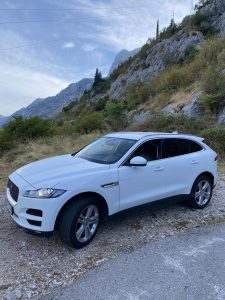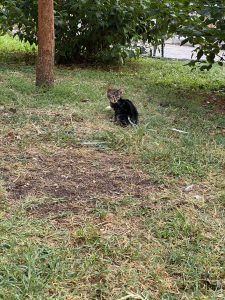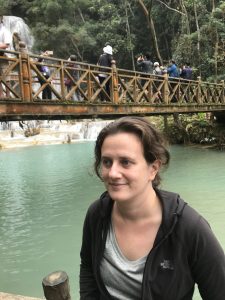Road trip to Montenegro

As part of my trip to Dubrovnik, I decided to rent a car and drive to Montenegro. I had a little over a day so I had to limit a bit of my exploring to a couple of places. But, before getting into the beauty of this Balkan country, I rented my first car internationally by myself and that was quite the ordeal.
Before deciding to go solo, I explored a few different options for how to get to and see Montenegro from Dubrovnik. I found some bus tours but they were very large groups which felt less than ideal given the COVID situation. Montenegro’s infection rate was pretty high, especially for the region, at the time I visited. I was referred to a few individual guides but everyone was booked up. So, renting a car and driving solo it was.
As someone who has driven a manual car a few times in my life but not with enough regularity to feel comfortable navigating driving in a foreign country with different driving laws and signs in a language I don’t know, I opted for an automatic car. I reserved the cheapest and smallest automatic car available, a SmartCar.
When I arrived to pick up the car, the rental car company informed me they were out of small automatics and asked if I could take a manual instead. I declined and they presented me with a large, black Range Rover. In order to cross some borders in Europe, you need a “green card” that you present at the border crossings. Rental car companies charge more for this — at least 50 Euros. While going over the various scratches on the Range Rover, I asked to see the green card. Turns out it was missing for this vehicle so I wouldn’t be able to rent it. Slightly disappointed but also slightly relieved that I wouldn’t be driving this monster vehicle, I awaited the next car.
Well, they drove up with a white Jaguar SUV. The Range Rover was looking pretty good at that point! Don’t get me wrong – part of me was excited to drive a Jag for the first time. I just was not thrilled about this first occurring in an unfamiliar country. The Jag did have the green card so I could actually leave Croatia and return. I had also paid in advance for GPS and confirmed with the rental car agent that the car was set for that. Before driving off, I tried the GPS myself and it needed an SD card to actually function. Back inside I went and luckily the rental car company handed me a Garmin device that worked. Next stop: Montenegro!
Luckily, picking up the rental car was the most eventful part of the journey (at least, until arriving at the Airbnb – more on that later). Crossing the border into Montenegro was surprisingly easy (and no one asked to see the green card!).
I was pretty quickly taken by the gorgeous scenery in Montenegro and had to pull over a couple of times to take it all in (and take a few pics). My first real stop was in Perast — a beautiful tourist town located on the Bay of Kotor. After parking and paying the attendant for said parking, I wandered around the town.
While it did feel touristy, it wasn’t overrun with crowds (even though parking was full) and it was possible to take a nice leisurely stroll and take it all in. Its bay was lined with cafes, hotels, shops, and homes. There were a few “sites” to see including the tower of the church of St. Nicholas, Our Lady of the Rocks island, and the bay itself with water sports, swimming, and sunbathing.
Next up was getting to my Airbnb in Kotor where I’d be staying for a night and the remainder of my time in Montenegro. I was so relieved to pull up and not be driving the huge luxury vehicle anymore. But, the location housed a few units and the neighbours wanted me to back into the spot which I was wary of doing with a vehicle that may have cost more than my annual salary last year. So, two women who spoke basically no English directed me, in Montenegrin, and helped me get the SUV backed into the driveway.
I was staying at a place that was outside of the main area of the city which was good and bad. It had a lovely view and avoided the crazy crowds of the town. But, it was up quite the hill and a few miles from town. Being a bit short on time meant I needed to drive into town.
Nevertheless, I ventured down the hill, found parking, and began exploring this town on the bay.
The town of Kotor reminded me of a smaller version of Dubrovnik. The city was also walled in behind some ancient city walls that were recently remodelled in such a way that you can walk a lot of them and even lounge with a drink in some spots. There were lots of churches inside and tons of cute shops and cafes. However, unlike Dubrovnik, the town was designed to intentionally be confusing as a protection against potential invaders so it is a bit difficult to easily get from point A to point B.
I very much enjoyed hiking to the top of the Kotor Fortress and got a grand view of the city and the bay. The trail is mostly switchbacks made up of stone steps but it is filled with views all the way up. There is a small fee (a few Euro) to enter and hike though I did think it was worth it. The whole excursion, with taking in the views at the top, probably took a little over 90 minutes. There were plastic garbage bags at most switchbacks to collect litter which I appreciated as it really did seem to reduce the amount of trash on the trail.
To supplement my solo wandering and exploring, I signed up for a walking tour and I ended up being the only person on that particular tour. It was a cool experience to get some one-on-one time with a guide.
The town is comprised of an interesting mix of architecture — Venetian, French, and Astro-Hungarian. The area around Kotor tends to experience a big earthquake every 100 years or so. The last large earthquake was in the 1970s and there is still damage from this seismic activity that has not been repaired mostly because it isn’t known who owns some of the buildings. Only about 300 people currently live in the city due to the rising cost and being pushed out for tourist facilities and Airbnbs (similar to Dubrovnik).
Some older buildings that haven’t been in use for years have recently been renovated and are now being used for a different purpose — like the prison that is now an art space and the old grammar school that is now the home of the University of Montenegro’s tourism department. However, not all of the repurposing is positive. I learned that an island off of Montenegro which was previously used as a PoW facility in WWII is being turned into a megaresort for the uberwealthy. Many in Montenegro voiced their outrage over this but the construction is full steam ahead.
As the tour guide mentioned, cats are most likely treated better than people in Kotor. There were cats everywhere inside the city walls and I saw multiple people bring out food for the cats of all ages, kittens included. People left out cushions for them, built little houses for them, and set up water and food bowls.
The views of the town and the surrounding area at sunset were quite breathtaking. There had been a rainstorm earlier in the day which added to the spectacular nature of that evening’s sky.
I was a bit pickier with eating out in Montenegro due to the COVID rates — at least a restaurant or two on my list to check out did not have any outdoor dining which meant no dice for this trip. I did find a lovely place, Resto Bar Taraca, that was situated on the river for dinner that offered veggie delicacies like tofu that I’d been missing! At my tour guide’s recommendation, I procured a delicious, veggie-heavy breakfast right outside of the city walls at Dojmi. And I had an iced coffee (aka coffee with ice cream) to accompany my semi-healthy meal.
It was a pretty jam-packed 24 hours in this stunning country and I know I only scratched the surface. I am quite glad I made the trip and even got to have a bit of fun in the Jag on the drive back. I did get stuck in a pretty intense rainstorm on the drive back to Dubrovnik but was rewarded with some breathtaking final views before having to return the car and hop on the plane back to Zagreb.
Tips for Renting a Car Internationally:
- Research if any of your credit card’s offer car rental insurance in advance. Car rental companies like to sell insurance pretty hard and it’s nice to save the expense if you are already covered.
- Make sure to confirm all of the extras that you paid for are included and working before driving off.
- Bring the confirmation with you and know how much you owe so there are no surprises and any confusion is avoided.
- Most cars in Europe are manuals and you will pay extra for an automatic. There tends to be less supply of automatics.
- Think about where you are driving and the potential language and alphabet barriers. Getting a GPS might help with these situations.
- Be prepared for fuel to be more expensive than you are used to. Also, depending on the country, gas stations may only take cash.
- Some gas stations may not be self service so figure that out before trying to refuel your own vehicle.
- Also, a lot of cars run on diesel in Europe — just something to be aware of.




















































3 Responses
Hi Julia,
Thanks so much for sending me your blog. I’ve only read a small slice so far, and you’ve stirred lovely memories..
I celebrated my 21st birthday in Kotor in 1968, sitting on a bench along the shore sharing a bottle of wine with my 2 Canadian travelling companions. We were staying in Kotor with the aunt of one travel buddy (whose father had left Croatia for Canada after WW2) in a very old and beautiful stone house which was the family getaway from their city home in Split.
I remember visiting a church in Kotor which housed the skeleton of a saint. Memorable to me because he was so short. Otherwise, I have pleasant feelings of my time there, and in Yugoslavia generally. Fro Kotor we hitchhiked down the coast to Dubrovnik, around Albania to Athens, and on to Turkey etc. in a 3.5 month adventure that remains a high point of my life.
Your pictures are amazing. I love towns where cats thrive. Looks like a wonderful adventure.
Thanks for sharing your travel adventures. The photos are very nice.
Your dad is a friend and provided this link for me.